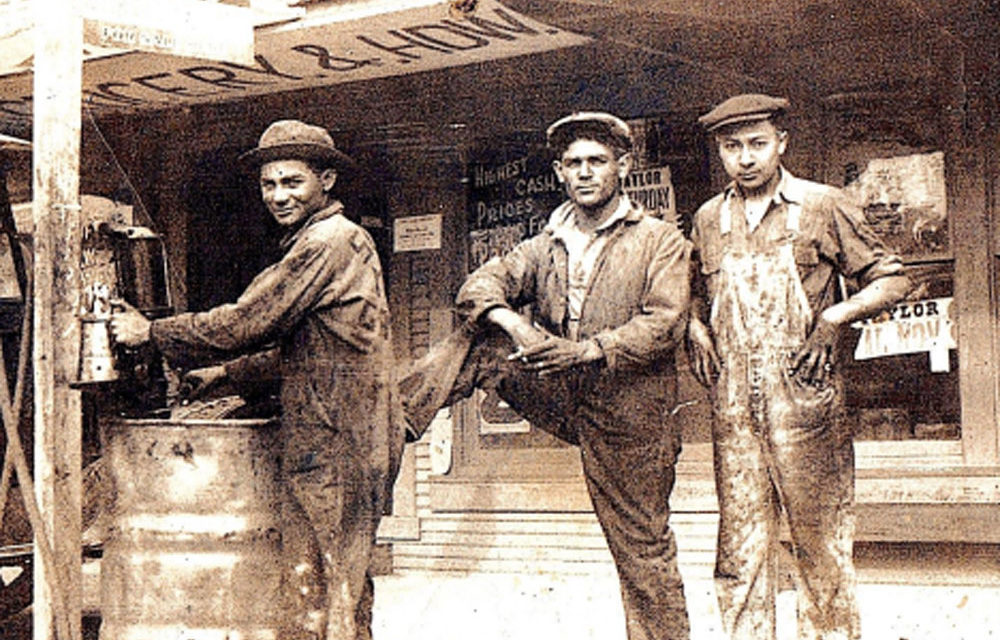A New York Times front page article on Sunday [Feb. 7, 2021] titled “As Jobs Dry Up, Renters Pack in and Fall Behind” got my attention. When talking about today’s job losses, poverty, homelessness, and hunger, many commentators often cite statistics from the Great Depression era. There are commonalities and differences between these two events separated by nine decades.
The depression of the 1930s was caused by financial greed, an unregulated Stock Exchange, irrational trading on Wall Street, in addition to unprecedented droughts in the American west. Moreover, the ripple effects of failing global markets and banks, notably those of Germany and Britain, linked to unpaid World War I debts, led to the closure of thousands of factories in Europe and America causing job losses for a third to a half of all world-wide workers.
The current world crisis [2020-2021] that we are experiencing has origins in the deadly virus pandemic which has killed and sickened millions of Americans, and shuttered the doors of numerous retail industries and factories. The results of the pandemic have been massive job losses, home evictions, homelessness, and hunger not seen since the Great Depression of the 1930s. My insights here have been shaped by many decades of
teaching American history as well as the narratives provided by my parents who lived through the depression years.
My mother, Alicia Saenz, first became aware of how the Great Depression impacted her classmates, neighbors and family when she reached the age of twelve in 1933. She shared with me that in the fifth grade her family could no longer afford to give her the ten cents for her lunch, a decision that led her and many others from her Westside neighborhood to leave school so that they could earn money to help their families.
Alicia Saenz’s father, Jose Maria Saenz, had been a ranch hand in his younger days, but moved to San Antonio in 1901 to raise a family. Uneducated, undocumented, and unskilled, he worked at odds jobs earning very little and counting, as a last resort, on his six children to contribute to the household finances.
After the start of the Great Depression in 1929, there was little work in San Antonio, and Alicia’s father took his children and several neighbor boys to the cotton fields around Corpus Christi, Robstown, Alice, and South Texas to harvest the crops. My father, Henry Romo, was sixteen at the time and my mother was twelve. They met picking cotton and married eight years later in 1941. In their teens
they would go with my grandfather to the fields for short periods, anywhere from a few days to a few weeks.
My mom Alicia never forgot how the Great Depression impacted her life. During the months when work for migrant farm laborers was scarce, she assisted her family shelling pecans. As a young girl, she shelled pecans, a cottage industry that employed thousands of Latina women and children. One federal investigation by labor researchers showed that San Antonio was the foremost pecans-shelling center of the Southwest, and the industry before 1939 normally employed between 6,000 and 12,000 workers. The labor researchers found that the ”average piece work wage for a 54-hour week was $1.56.”
Most states lacked the resources to address the hunger and homelessness that arose in a relatively short span of time during this era. Federal economic
intervention was needed. The depth of the crisis required that the newly elected government of Franklin D. Roosevelt step in early with swift new policies and legislative action.
One of the major legacies of the Great Depression was the passage of federal laws that would ease the job losses and subsequent poverty of average Americans. Beginning with Roosevelt’s first one hundred days, the administration set out to tackle America’s greatest problem, the lack of jobs. A significant Roosevelt policy was the funding of the Work Projects Administration [WPA].
The WPA created jobs for millions of unemployed Americans. In San Antonio, Latinos made up part of the work crews that gave life to the San Antonio Riverwalk. An insightful account of San Antonians finding work with the WPA during the Great Depression is found in the book Texas published in 1940 by the Texas Writers’ Project, which was funded by Roosevelt’s Work Projects Administration [WPA].
The researcher reported in Texas noted the sizable federal investment in enhancement of the San Antonio River in the downtown area. This investment included construction of the river-edge walks, an outdoor theatre, and a deepening of the river to allow small river crafts. With federal funding through the WPA, the famed Riverwalk was made possible. The project provided jobs for thousands of San Antonio workers, many of whom had been unemployed for much of the decade. For San Antonio, federal funding made a difference.
Important changes to improve lives were accomplished through federal government action. Some of the most progressive legislation to come out of that era included the Social Security Act 1935. While we often think of the Social Security Administration as providing a monthly check for the unemployed, it was more than that. For the first time in history aid was made available to the blind, deaf, and disabled, as well as to dependent children.
The Roosevelt team included Secretary of Labor, Frances Perkins, the first woman to ever serve as a cabinet official. Roosevelt and Perkins gave Americans new hope, but also provided solid reasoning for the government to provide assistance. For the first time the Congress and Senate debated how and why the United States government could help the “deserving poor,” those Americans who could not support themselves through no fault of their own. The Roosevelt administration was the first to accept the idea that poverty was not always a result of personal failure–but that poverty had much to do with structural economic shortcomings.
There are many lessons from the Great Depression that we can apply to the current pandemic and economic crisis. The pandemic has left many Americans with a feeling of hopelessness, but the lesson of the Great Depression shows us that leadership matters, as well as ideas. The government has a multitude of tools to address the losses that we are experiencing in earnings, educational attainment, and social interactions.
There is much to be done. Jobs can be created overnight if the federal government provides funding torepair America’s outdated infrastructure of highways, roads, public transportation, and bridges.
Our healthcare system needs resources, and more Americands need insurance coverage. More funding should be allocated to research centers and universities to maintain America’s strong position in areas of artificial intelligence, cyber security, and health.
Finally, our education system is another area where infrastructure funding can make a difference. Remote learning is a significant problem for students without access to computers or wifi.
Lessons of the Great Depression: A Latino Perspective










